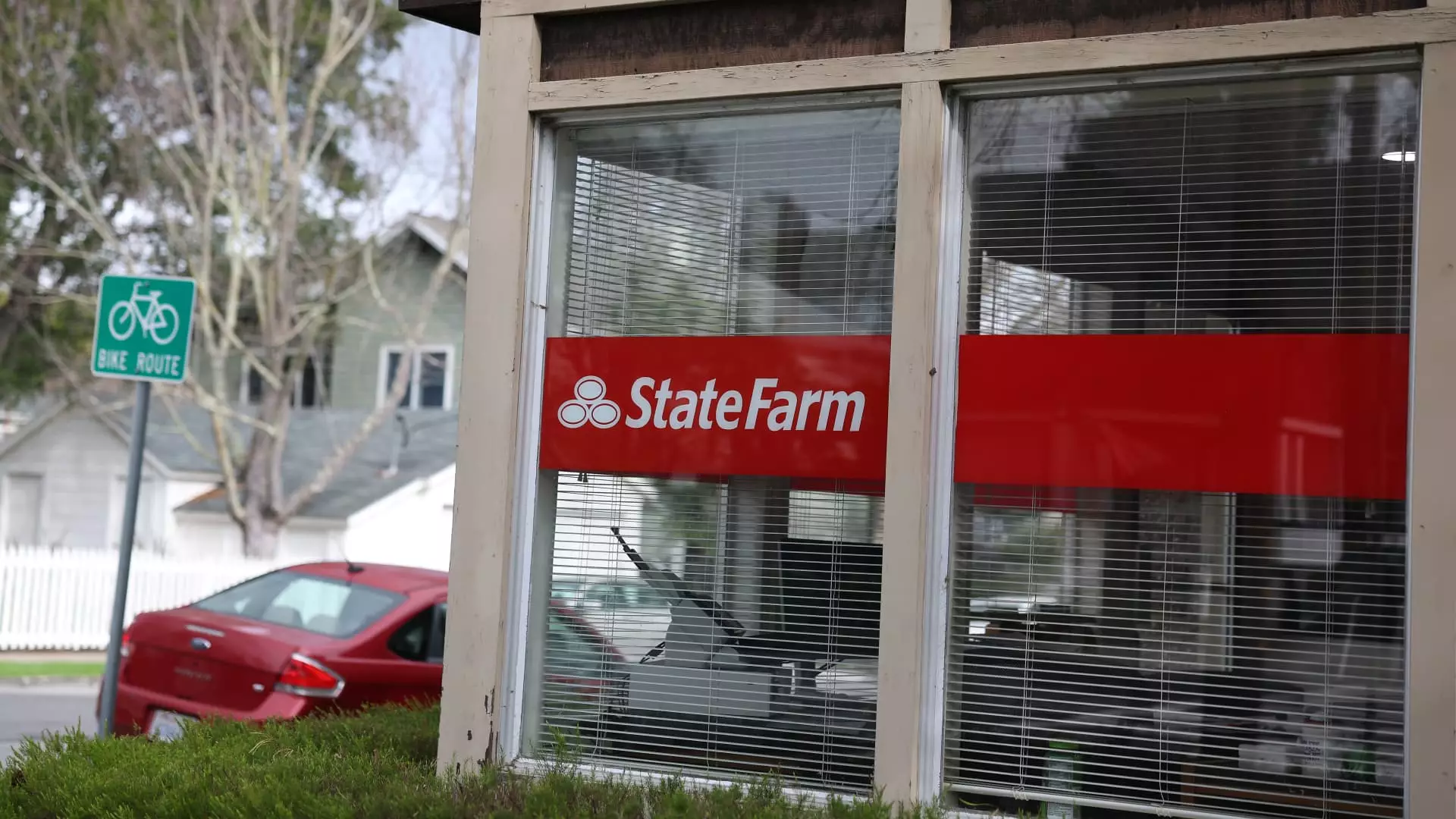The urgency of State Farm’s request for significant rate increases in California cannot be overstated. This plea, articulated in a recent three-day administrative hearing, emerges against the backdrop of an unprecedented crisis triggered by the recent catastrophic wildfires in Los Angeles. These fires, linked to the broader climate crisis, have inflicted monumental damages estimated between $250 billion to $275 billion, making them not just the costliest in California’s history but potentially the most financially devastating natural disaster in the United States. In a state grappling with climate-induced calamities, the consequences of denying State Farm’s emergency request extend beyond mere numbers; they threaten the very fabric of security for millions of Californians.
The administrative judge in Oakland has become a focal point in this unfolding drama, tasked with assessing whether to grant State Farm the urgent assistance it claims to need to stave off financial collapse. The company’s predicament is dire, echoed poignantly by an attorney from the California Department of Insurance who likened the situation to the Titanic, warning that if the financial vessel of State Farm sinks, around 3 million policyholders may find themselves adrift without coverage. This stark analogy brings to light not only the gravity of the insurance crisis but also the broader implications for the housing market and individual livelihoods across the state.
The Fine Line Between Profit and Sustainability
At the heart of State Farm’s appeal is a request for a rate increase of 17% on homeowners’ insurance rates—a figure down from an initial ask of 22%. For renter dwelling policies, the proposed hike is a staggering 38%, raising questions about the appropriateness of such increases in a state where economic vulnerability is pervasive for many. Advocacy groups, such as Consumer Watchdog, have raised red flags, claiming that the insurer has yet to substantiate its justification for these hikes. The fluctuation in requested rates sends mixed signals about State Farm’s financial strategy and raises legitimate doubts among consumers about the company’s internal consistency and trustworthiness.
The insurance landscape in California is marked by an unsettling truth: many insurers, including State Farm, are grappling with the paradox of needing to increase premiums even while facing significant challenges in underwriting. The California market is, as economist David Appel stated, undergoing a dramatic deterioration, largely driven by the increasing frequency and severity of natural disasters. It’s a harsh reality that exposes the fragility of the insurance industry—a system designed to provide security and peace of mind now teetering on the brink of insolvency.
Policyholders Caught in the Crossfire
For the average Californian, the implications of State Farm’s request for rate increases are haunting. With approximately 3 million policies in effect, many families currently face the stubbornly harsh reality of rising premiums when household budgets are already stretched thin from inflation and economic instability. The imminent threat of financial instability affecting State Farm’s operations has left homeowners at risk, particularly those who may find themselves ineligible for coverage from more financially stable providers or who may be forced into the arms of the state’s FAIR plan—often viewed as an insurer of last resort.
As State Farm limits its scope by severing new policy offerings due to the heightened risks of natural disasters, the crisis deepens. These restrictions will not merely result in higher rates but will also exacerbate the existing insurance desert that threatens to envelop California’s vulnerable communities. When traditional insurers retreat, it often leaves those who are less financially secure without viable alternatives, trapping millions in a precarious situation where they cannot afford coverage or are forced to accept subpar options.
Political Dynamics at Play
The unfolding insurance crisis is also a symptom of larger political dynamics in California. Insurance Commissioner Ricardo Lara’s hesitance to approve exorbitant rate increases reflects a broader ideological commitment to protecting consumers from market abuses. However, this protective stance must be weighed against the dire need to ensure that insurance companies remain solvent and capable of meeting their obligations in times of crisis.
The implementation of a “Sustainable Insurance Strategy,” aimed at refining how insurers evaluate risk and price their products, offers a glimmer of hope. Nonetheless, it remains to be seen whether these measures will come in time to salvage an insurance marketplace that has already seen extensive erosion. Janet Ruiz of the Insurance Information Institute has emphasized that without immediate corrective actions, the systemic issues leading to this crisis will only worsen, ensnaring consumers in a cycle of instability.
All told, while supporters of State Farm’s rate hike posit that the increase could lead to financial stabilization, the potential fallout for consumers must not be disregarded. With the risk of social and economic consequences looming, the stakeholders involved—insurers, regulators, and consumers alike—must engage in a critical dialogue about how to achieve a balanced approach that ensures both market stability and consumer protection in an increasingly unpredictable environment.


Leave a Reply